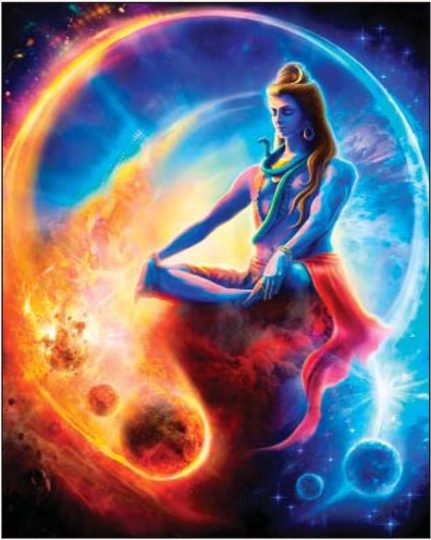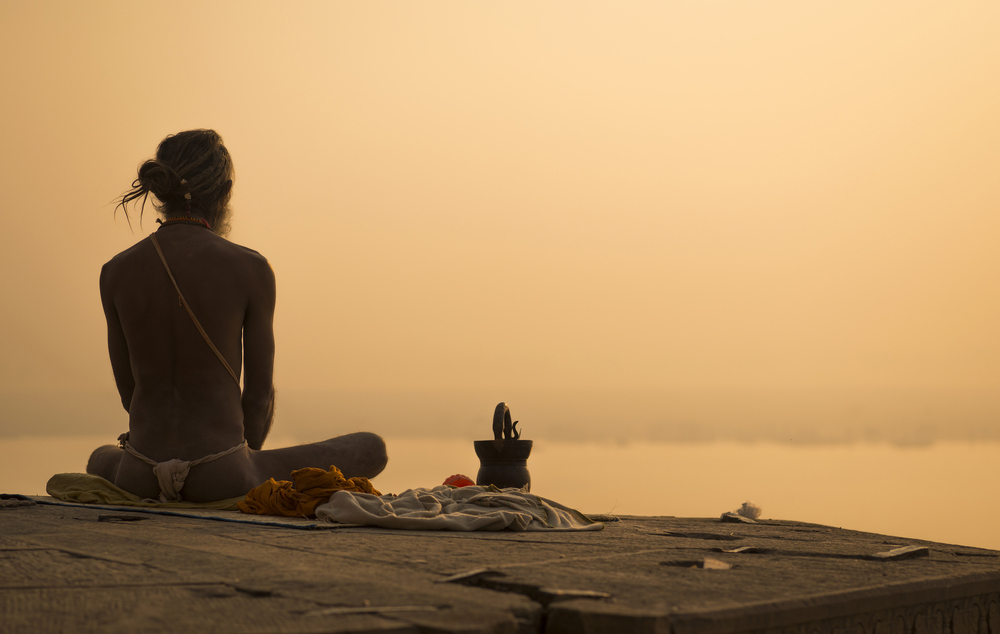The third and final series detailing a yogi’s peak yogic experience on Earth
The following text continues and ends the second chapter of the knowledge section of Sarvajnanottara Agama, verses 33-63. Narrated by Lord Siva to Lord Skanda, this Agama outlines yogic preparation, posture, breath control, mantra and perception of the 36 tattvas, or categories of existence. Then it discusses the nature of the Self and the relationship between the meditator and Lord Siva. In this installment, the aftermath of Self-Realization is described.
HAVING ABANDONED ALL worldly activities, being free from desire for worldly enjoyments, keeping the company of worldly-minded persons away, released from all attachments related to location, lineage, caste and stages of life such as celibacy, house-holder and so forth, the refined and enlightened seeker should contemplate the essential nature of himself. Guided by the Self within, he affirms, “This is the mantra I recite; this is the Deity I worship; this is the mode of my meditation; this is my way of austerity.” Having abandoned all differentiated notions, the truth-seeker should one-pointedly contemplate the state of his own Self. Firmly fixing his contemplation from the three positions—difference, non-difference and both—and having trained his mind to be motionless, he should engage in no other discipline.
The essential nature of the Self is inconceivable to those desirous of worldly enjoyments, but it is well attainable by those intent on their final liberation. In its embodied state, the Self—having constricted and insignificant knowledge—is comparable to an inert object. In its liberated state, it is pure and unlimited consciousness. Keeping his mind completely still, the aspirant can now experience the bliss of his own Self. That bliss—accessed by renouncing the tattvas, which hide the soul’s real nature—is supreme, unchanging and ineffable, infinite and incomparable. This state is known as unmanibhava.
All varnas and stages of life hold different rules regarding directions, locations and appropriate times in respect to the systematic practice of the disciplines of yoga. But no such rules are laid down for those devoted to the experience of the supreme Self. For the sadhaka who meditates in this way and who becomes established in the Self, past deeds and their fruit do not exist. There is nothing to be performed now or in the future. There is no command, no external insignia, no observable regulations; he is free.
In all activities and in all occasions—whether he walks or stands, is awake or asleep, eats or drinks, whether he is assaulted by stormy winds, extreme cold or excessive heat, whether afflicted by the fruits of his past deeds, indigence or disease, whether distressed by indigestion, fever and other ailments—the sadhaka who meditates on his own Self maintains detachment from external matters. Attaining calmness, he remains self-content and evolves as a pure, transcendental being.

“I exist in my own self. I have not come here from another place; nor am I going anywhere. I will not come in the future; nor will I go. I have not been born; nor will I be embodied again. All the bodies absorbed in the Self are thus evolved beyond nature, prakriti—which is associated with ever-persisting phenomena, conditioned by past deeds of younger souls. The deeds of those bound souls are affected by the bodies which evolve from maya, and continue reincarnating through maya because of karma. As such, I do not perform even an insignificant action.” With this firm resolution the knower of Reality is liberated from karma and maya. The sadhaka becomes all-pervasive by the constant practice of non-dual meditation.
With constant practice, he reaches a bodiless state and becomes permanently immersed. For such an accomplished yogi, there is no initiation, no sacrament, no mudra, no mandala, no incantation, no worship, no meditation, no oblation; no performance of rituals or fasting is ordained for him. Drinking the nectar of Sivajnana, God knowledge, and roaming about according to his own wish, he becomes eternal like Me, Lord Siva. The victorious yogi becomes absolutely free from the cosmic phenomenon of creation and absorption.
As earnestly affirmed by an oath, I swear this is truth. O Guha! There is nothing to be known as superior to this truth. Being of absolute purity and pure consciousness, the rare yogi purifies all manifestation with his glance. Unbound and unshrouded, he sees—through his pure contemplative vision—all things and all beings as pure expressions and manifestations of Siva.
DR. S. P. SABHARATHNAM SIVACHARYAR, of the Adisaiva priest lineage, is an expert in ancient Tamil and Sanskrit, specializing in the Vedas, Agamas and Silpa Shastras. This excerpt is from his completed translation of the revered Sarvajnanottara Agama.
